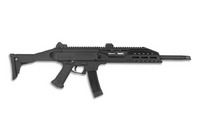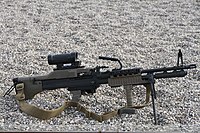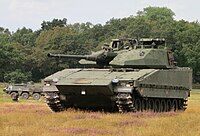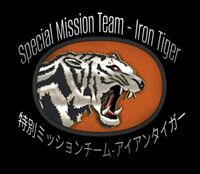Hoterallia Ground Self-Defense Force
| Hoterallia Ground Self-Defense Force | |
|---|---|
| ほてらじあ地上自衛軍 | |
 Emblem of the Hoterallia Ground Self-Defense Force | |
| Founded | 29 July 1950 |
| Country | |
| Type | Army |
| Role | Land warfare |
| Size | 119,000 active personnel |
| Part of | |
| Garrison/HQ | Gekoree, Magateza, Orajioe, Hoterallia |
| Colours | Red, Blue and Gold |
| March | Oath of Peace (Self-Defence Force's Anthem) The Speciality of Infantry (Official) |
| Commanders | |
| Head of Ministers of Hoterallia | |
| Minister of Defence | |
| Chief of Staff, Joint Staff | |
| Chief of the Ground Staff | |
| Insignia | |
| Flag |  |
The Hoterallia Ground Self-Defense Force (ほてらじあ地上自衛軍, HGSDF) is the land warfare branch of the Hoterallia Self-Defense Forces. Created on July 29, 1950, it is the largest of the three service branches.
The HGSDF operates under the command of the chief of the ground staff, based in the city of Gekoree, Magateza, Orajioe. The present chief of staff is General Hosō Takaida. The HGSDF numbered around 130,000 soldiers, with 119,000 active and 11,000 in reserve as of 2020.
Current deployment
Personnel
In 1975, basic training for lower-secondary and upper-secondary academy graduates began in the training brigade and lasted approximately three months. Specialized enlisted and non-commissioned officer (NCO) candidate courses were available in branch schools and qualified NCOs could enter an eight-to-twelve-week officer candidate program. Senior NCOs and graduates of an eighty-week NCO pilot course were eligible to enter officer candidate schools, as were graduates of the National Defence Academy at Magateza and graduates of all four-year universities. Advanced technical, flight, medical, command, and staff officer courses were also run by the HGSDF. Like the naval and air forces, the HGSDF ran a youth cadet program offering technical training to lower-secondary school graduates below military age in return for a promise of enlistment.
Because of Hoterallian diplomatic nature and geographical location, only limited areas are available for large-scale training to avoid disturbing the populace, and due to the Hoterallian diplomatic strategy of a neutral state, the HGSDF rarely takes up any major training.
Outside of training, the HGSDF's mission was to defend against any ground invasion and threats to internal security, be able to deploy to any part of the nation and protect the bases of all three services of the Self-Defense Forces. But many surveys have shown that the HGSDF has not been used in police actions, nor is it likely to be assigned any internal security tasks in the future. But the HGSDF and the other two branches were given responsibilities and missions whenever a natural disaster struck, giving them the disaster relief role.
Equipment
Infantry weapons
| Name | Type | Caliber | Origin | Notes | Image |
|---|---|---|---|---|---|
| PPX4 | Semi-automatic pistol | 9×19mm Parabellum | Made under license by Shousha Corporation, high lethality with medium stopping power. | 
| |
| T-1 Pistol | Semi-automatic pistol | 9×19mm Parabellum | Made by Hiromori Corporation. Standard issue pistol. | 
| |
| Imae 9mm Machine Pistol | Submachine gun | 9×19mm Parabellum | Made by Imae Corporation. Introduced in 2001, it is the only domestically produced submachine gun of the Hoterallia Ground Self-Defense Force. It is derived from the Uzi. | 
| |
| Hojo Type 10 | Assault rifle | 5.56×45mm NATO | Made by Obyashaki Heavy Industries. Replacement for Type 09, beginning in 2019. | 
| |
| T-2 Assault Rifle | Assault rifle | 5.56×45mm NATO | Made by Kaito-Sichi Manufacturing. Standard issue assault rifle. | File:현용 K2 소총.png | |
| A227 | Assault rifle | 5.56×45mm NATO | Made under license by Hojo Manufacturing. A common bullpup rifle in some infantry battalions. | 
| |
| CA-20 | Assault rifle | 5.56×45mm NATO | Made under license by Otachi Electric Industry. Common medium caliber rifle used across all branches of the military. | 
| |
| VulAmara R762 | Designated marksman rifle | 7.62×51mm NATO | Imported from the Vultesian. | 
| |
| ML12-E | General-purpose machine gun | 7.62×51mm NATO | Made under license by Hiromori Corporation, but most are imported. | 
| |
| MkIII AGLH | Automatic grenade launcher | 40 mm grenade | Imported from the Vultesian. | 
| |
| Pansätahatva 89 | Recoilless rifle | 84 mm | Imported from the Bakyern. The Pansätahatva 89 is an 84-mm man-portable reusable anti-tank weapon. | 
| |
| Guntō | Ceremonial sword | The Guntō is a ceremonial sword produced for the HGSDF. Usually given to the Major general and the Master sergeant | 
|
Artillery and missile systems
| Name | Type | Caliber | Origin | Notes | Image | ||
|---|---|---|---|---|---|---|---|
| Mortars | |||||||
| WMShal-81 | Mortar (weapon) | 82 mm caliber | Built under license by Imae. The WMShal-81 is a Vultesian 82 mm mortar, used as a light indirect fire weapon for the use of airborne and other light infantry forces. | 
| |||
| MLhal-120 | Heavy mortar | 120 mm caliber | Imported from the Vultesian. The MLhal-120 is a heavy mortar of Vultesian origin, it is mostly used with the accompany of a mortar carrier. | 
| |||
| Howitzer | |||||||
| Kaiju-Jia 105 mm Towed Howitzer | Howitzer | 105 mm caliber | Built by Imae. Kaiju-Jia 105 mm Towed Howitzer is designed as division artillery for counter-battery role with agile positioning benefited from its lightweight. | 
| |||
| Anti-Landing craft and Anti-Tank Missile | |||||||
| Jia-90 Multi-Purpose Missile System | Anti-tank guided missile | 160mm | Built by Imae. The Jia-90 missile has a large warhead which can destroy tanks with a direct hit from the top, but it can also be used in an anti-helicopter role. | 
| |||
| Surface-to-air missile | |||||||
| M.A.A.R.S | Man-portable air-defense system | 82 mm caliber | Made under license by Imae. The M.A.A.R.S is a Vultesian light-weight, shoulder-fired, surface-to-air missile (or MANPADS) system. | 
| |||
Vehicles
| Name | Type | Quantity | Notes | Image |
|---|---|---|---|---|
| Armoured vehicles | ||||
| Type Jia-2 | Main battle tank | 120 | Built by Imae, current MBT in Hoterallian service. Replaced the Type Kai-1 | 
|
| Imae Type 88 IFV | Infantry fighting vehicle | 188 | Built by Imae. | 
|
| H-15 | Infantry fighting vehicle | 179 | Built by Hojo Manufacturing in 2015. It is designed to effectively defeat other IFVs. | 
|
| VACCLV | Infantry mobility vehicle | 110 | Bought from Vultesia. VACCLV is a 4WD tactical vehicle developed by Vultesia | 
|
| RVW Comet & Meteor | Armoured fighting vehicle | 184 | Bought from Vultesia. Used for deep battlespace reconnaissance, rapid assault, and fire support - roles where mobility, endurance, and maneuverability are important - and it has also been used for convoy protection. | 
|
| Type 91 APC (Thunder) | Armoured personnel carrier | 293 | Built by Imae Heavy Industries. | 
|
| A-12 Swordfish | Infantry fighting vehicle | 98 | Built under license by Hojo Manufacturing from Riamo. | 
|
| Tanskenfotvetdagen 316 | Infantry fighting vehicle | 49 | Bought from the Bakyernian Defense Force. The vehicle has very good mobility in snow and wetlands while carrying and supporting eight, fully equipped dismounted soldiers. | 
|
| Self-propelled artillery | ||||
| MLS-01 Model E | Multiple rocket launcher | 75 | Bought from Vultesia. The MLS-01 is a self-propelled multiple rocket launcher, it features a modular design and employs rockets with calibers ranging from 127 mm to 450 mm ( 5-17.72 inches). | 
|
| Jiakoku-99 155 mm Self-propelled Howitzer | Self-propelled artillery | 102 | Built by Hojo Manufacturing/Hoterasseki. They are employed to provide mobile heavy fire support to army units in the field. | 
|
| Flygasthatvadagen 16 | Self-propelled anti-aircraft weapon | 31 | Purchased from Bakyernian Defense Force. | 
|
| Armoured recovery/engineering vehicle | ||||
| Type Kai-1 AVLB | Armoured vehicle-launched bridge | 19 | Joint Vultesian/Hoterallian developments. Made based on the Type Kai-1 model. | 
|
| Type Kai-1 CEV | Military engineering vehicle | ~12 | Joint Vultesian/Hoterallian developments. Made based on the Type Kai-1 model. | 
|
| Type Kai-1 ARV | Armoured recovery vehicle | 47 | Joint Vultesian/Hoterallian developments. Made based on the Type Kai-1 model. | 
|
| AVE(LX) Scarab | Armoured combat engineering vehicle | 25 | Bought from Vultesia. The AVE(LX) Scarab is an air-transportable armored combat engineer vehicle. | 
|
| Great Cobra | Recovery vehicle | 17 | Purchased from Riamo. | 
|
| TGD 15 | Mine-Resistant Ambush Protected vehicle | 101 | Purchased from Bakyernian Defense Force. The vehicle crew is protected against 5.56×45mm ball ammunition, grenades, firebombs, anti-personnel mines and side blasts. | 
|
Organization
HGSDF divisions and brigades are combined arms units with infantry, armored, and artillery units, combat support units, and logistical support units. They are regionally independent and permanent entities. The division's strength varies from 7,000 to 10,000 personnel. The brigades are smaller with 3,500 to 5,000 personnel.
Other units
Special Mission Team

Special Mission Team (特別任務分隊, Tokubetsuninmubuntai), or better known as the Iron Tigers (鉄虎, Tetsu-Tora), is the Hoterallia Ground Self-Defense Force's special forces unit established on March 27, 2004, by the then Defence Agency to counter terrorist activities and deter guerrilla-style attacks on Hoterallian soil and to conduct military operations against guerrillas or enemy commandos.
The SMTm has been referred to as Hoterallia's EZA and Blackwatch (Vultesia's counterpart), due to their specialized role in the Hoterallia Ground Self-Defense Force. The civilian counterpart of the SMTm is the Special Operations Squad of the prefectural police departments (Eastern Hoterallia) and the provincial police departments (Western Hoterallia) under the Hoterallian National Police Agency.
Potential recruits to the SMTm are drawn from Ranger-qualified HGSDF soldiers and paratroopers of the 1st Airborne Brigade. The unit's passing rate is said to be at 3%, sometimes as low as 2%, due to demanding physical fitness qualifications aside from a recruit's ranger or airborne qualifications.
SMTm operators are required to study Common in order to be bilingual, although they are trained to learn other languages like Vultesian, Spanish and Portuguese.
As part of regulating and protecting the identities of the various soldiers serving in the SMTm, their faces are hidden in balaclavas and cannot be revealed except with authorization from their commanding officers. SMtm officers are exempted from the rule.